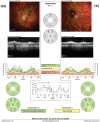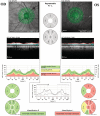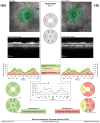Radius-Maumenee syndrome: A case series with a long-term follow-up
- PMID: 36814708
- PMCID: PMC9939581
- DOI: 10.1002/ccr3.6918
Radius-Maumenee syndrome: A case series with a long-term follow-up
Abstract
The aim of the case series is to highlight the surgical challenges experienced like failed intervention, choroidal effusion, a postoperative cystoid macular oedema, and describe treatment options for Radius-Maumenee syndrome. Authors reported on 3 bilateral cases of Radius-Maumenee syndrome which underwent medical treatment, trabeculectomy with Mitomycin C, implantation with XEN45, Ahmed glaucoma valve, Baerveldt glaucoma implant, and cyclophotocoagulation.
Keywords: Radius‐Maumenee syndrome; ab‐interno subconjunctival gel stent; glaucoma drainage device; idiopathic elevated episcleral venous pressure; secondary open‐angle glaucoma; trabeculectomy with mitomycin C.
© 2023 The Authors. Clinical Case Reports published by John Wiley & Sons Ltd.
Conflict of interest statement
The authors declare no potential conflicts of interest with respect to the research, authorship, and/or publication of this article.
Figures











References
Publication types
LinkOut - more resources
Full Text Sources

